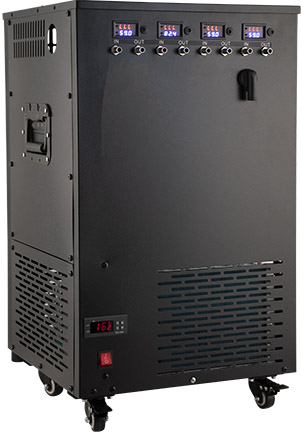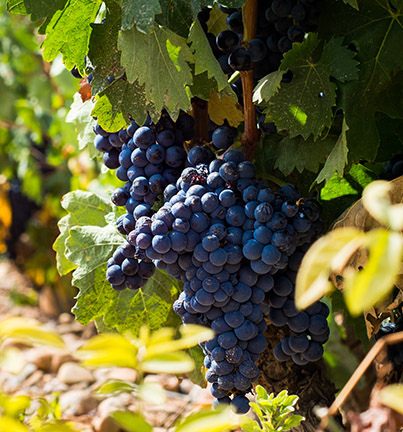
Tempranillo is a Spanish grape best known as the main ingredient in that country’s respected Rioja wines. It’s also the basis of Vega Sicilia, arguably Spain’s most famous vino.
Tempranillo wines can have flavors you’d expect in a Cabernet, like dark fruit and mocha, the pepper you might find in a Syrah, and the savory notes and earthy tannins of some Sangioveses. The wines can be light and fruit-forward or fuller bodied and oaky.
In recent decades, plantings of Tempranillo have increased dramatically. According to University of Adelaide researchers, Tempranillo was the world’s fastest-expanding wine grape varietal between 2000 and 2010 with new plantings double that of Cabernet Sauvignon. About 346,000 more acres of the grape were planted worldwide, or about the same area as Australia’s total vineyard coverage, bringing total acres up from about 222,000 to 568,000.
Winemakers in countries including Australia, the United States, Argentina, Chile, and Mexico are now making top-notch Tempranillo wines. Spanish versions have also improved in quality, especially the wines coming out of Ribera del Duero and Toro, two regions a couple of hours north of Madrid. Today, Portugal’s incarnation of the grape — always an ingredient in their dessert wine, Port — also makes very good red wines, particularly in the Dao and Duero regions. It is produced under the Portuguese varietal name Tinta Roriz.
With so many versions and sources of inspiration, it’s a good time for an experienced home winemaker to tackle the grape. However, because of its sometimes harsh tannins and acidity issues, the grape can require skillful handling. To help you acquire those skills, I’ve assembled a Tempranillo A-Team: Three winemakers from the United States and one from Spain.
Abacela in Oregon: The American Rioja
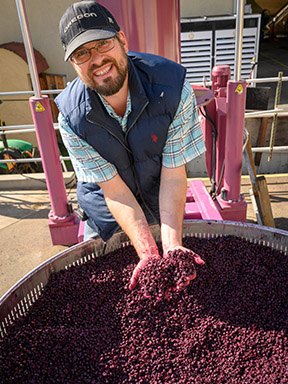
In Oregon, Abacela Vineyards & Winery is an American Tempranillo pioneer celebrating 25 years since the planting of their first vines. The winery’s founders, Hilda and Earl Jones, carefully selected their vineyard site after examining Spain’s best Tempranillo growing areas. Abacela’s growing conditions in southern Oregon include a relatively short growing season, a cool spring and a hot, moderately dry summer, cut short by a cool autumn. These are critical ingredients, say Abacela’s founders, for producing fine, age-worthy Tempranillo wines.
In line with the four versions of Spanish Rioja, dictated by time in both barrel and bottle — “joven” to “gran reserve” — Abacela also make four styles of Tempranillo.
In 2009, Abacela’s 2005 Tempranillo Reserve became the first American wine to win a gold medal in Spain’s Tempranillos of the World competition. Winemaker Andrew Wenzl jokes that the Spanish wine judges probably thought their Abacela Tempranillo was Spanish. Although, he says, most people find their Tempranillos carry more dark fruit than many Riojas.
Jarvis Estate in California: A Tempranillo Balancing Earth and Fruit
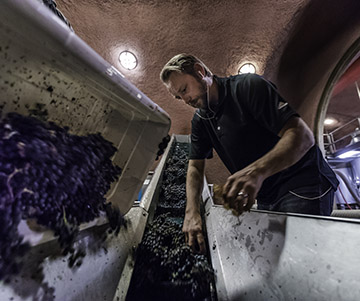
In California, where the growing season starts earlier and the temperatures are hotter, Jarvis Estate winemaker Scott Morrison says he is influenced by the Spanish approach to Tempranillo — like aging in barrel and bottle — but, “being as we are in California and not in Spain, we have to craft the wine with the given terroir and weather.”
The Jarvis Estate 100% Tempranillo still exhibits classic Tempranillo tastes and smells. “Aromas of cherry, plum, strawberry, tobacco, and clove are typical vintage-after-vintage. A great balance between earth and fruit,” says the winemaker.
The Tempranillo was grafted over in 2005 in a vineyard 1,000 feet above the Napa Valley floor. “With our elevation, the cool mountain growing region affords moderate temperatures for optimum ripening of the grapes,” he says.
Elevation for the grapes, but the Jarvis Estate winery is completely underground. The state-of-the art facility occupies a 45,000-square-foot space that was tunneled out of the Vaca Mountains in the 1990s.
Amigoni Urban Winery: The Godfather’s Tempranillo
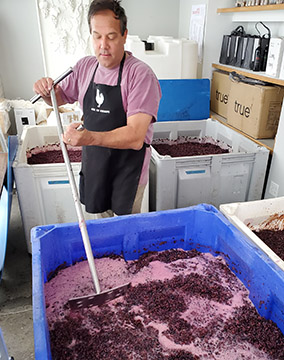
Winemaker Michael Amigoni — known to some as the “Godfather of Missouri vinifera” — sources his Tempranillo grapes from quarter-century-old vines in the Californian region of Lodi.
When Amigoni and his wife, Kerry, established their winery in 2007, it was the first urban winery in Kansas City. Today, Amigoni makes wine out of a range of Spanish, Italian, and French grape varieties and says he’s not influenced by Spanish style Tempranillos.
“The New World Tempranillo grape seems to be a different clone and have more structure and depth than the Spanish version,” he says.
Amigoni’s Urban Vaquero is 90% Tempranillo with 10% Merlot or Cabernet Sauvignon.
He adds that, compared to many Spanish winemakers, he has a different objective in mind when he ages Tempranillo in oak.
“Think finesse versus brawny,” he says. Amigoni’s red wines are aged for 18 months in American oak with well integrated, muscular results.
Spain’s Rodriguez Sanzo Wine Company: Tempranillo with the Power of a Bull
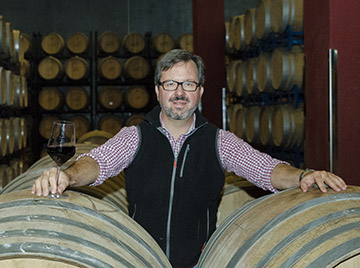
Amigoni’s brawny wines could have competition from Spain’s Toro region. The name means bull and the Tempranillos are often compared to the animal. The area’s powerful, often higher-alcohol Tempranillos are partly a result of terroir and the intensely arid climate. According to legend, the town of Toro’s medieval clock tower is held together by cement mixed with local Tempranillo wine.
Rodriguez Sanzo, the Spanish wine company of husband and wife team, Javier Rodriguez and Maria Sanzo, sources Tempranillo grapes from several regions including La Rioja, Ribera del Duero, and Toro.
Rodriguez says his best Tempranillo wines are from grapes grown in the sandy and pebbly soils of Toro where many of the vines are between 80 and 120 years old.
“We use those to make our Las Tierras Original wine and Las Tierras Teso Alto wine,” says Rodriguez.
It’s also the Spanish wine region with the highest percentage of pre-phylloxera vineyards, where numerous vineyards date to the mid-19th century and many of the vines are ungrafted.
Harvesting the Grapes
When Abacela harvests, pH is usually 3.68, acidity is at 5 or 6 g/L, and °Brix is 24 to 24.5. Generally speaking, winegrowers regard a pH of 3.4 to 3.7, acidity of 6 to 8 g/L, and 22–25 °Brix as ideal parameters.
For Wenzl, a critical harvest indicator for Tempranillo is the degree of tannin astringency in the grape skins.
“I’m looking for that to shift over and become a little bit softer because if you have really hard tannins then that’s going to translate to the final wine,” he says.
It’s also important to keep a close eye on acidity levels.
“Tempranillo is notorious for dropping its acid right at the tail end of its ripening curve,” says Wenzl. If the Oregon winemaker is faced with low acidity in his grapes he adds tartaric acid during fermentation.
Rodriguez says this low acidity is a result of the variety being very good at absorbing potassium from the soil.
“In many (Spanish) regions it’s blended with varieties like Garnacha, Graciano, Mazuelo, and Rufete, to compensate for this lack and increase organoleptic complexity,” the Spanish winemaker explains.
Low acid levels can mean high pH in the ripening grapes. Wenzl warns against harvesting when levels are in the 3.9 range because after fermentation you might end up with levels as high as 4.2.
“There’s usually a buffering capacity with potassium in the wine and you wouldn’t be able to dump enough tartaric acid in there to bring the pH down without tasting it. So pick date is very important,” he says.
But dealing with Tempranillo grapes that are pushing pH 4 is not an uncommon challenge for our A-Team. Amigoni says his Lodi grapes often come in with a high pH, sometimes even when the acid levels are also high. The 2019 crop measured 26 °Brix and had a pH of 4.18.
“So, we still boost acid to drive down the pH to the 3.65 range and let the acid drop out during fermentation,” he says.
Primary fermentation can lead to a reduction in acid levels. Amigoni says he also lets the secondary, malolactic fermentation (MLF) deal with any excessive acid flavors. MLF converts tart malic acid to buttery tasting lactic acid and also reduces the overall acidic impression of the wine.
At Jarvis Estate, Morrison aims to harvest with Brix in the range of 24 to 26. He likes to keep alcohol levels down and, “retain, as much as possible, the natural acid.”
Morrison says pH can be around 3.6 or, in hotter vintages, a pretty high 4.0. So, like Amigoni and Wenzl, he adds tartaric acid, but he allows tasting trials to dictate these additions rather than pH level.
In Spain, Rodriguez tests his ripening grapes for pH, Brix, acidity, and anthocyanin levels, but as harvest time approaches, the exact date for bringing in the grapes is decided by taste trials and the lunar calendar. Yes, you read that correctly, the lunar calendar. According to this theory, popular among advocates of biodynamics, the grape takes on different flavors and aromas depending on which day you pick it during the lunar calendar. The lunar calendar can be divided into four periods that favor either the flower, fruit, leaf, or root. Interestingly, the science- and logic-based Wine Folly website has informally tested this theory and reluctantly accepted that it does have validity.
The Crush Pad
“No crushing!” says Jarvis Estate’s Winemaker, Scott Morrison.
One of Wenzl’s and Morrison’s preoccupations is protecting their future wine from seed tannins that can be harsh compared to other reds like Cabernet Sauvignon or Cab Franc.
“If those seeds are bound up inside the berries then there’s less exposure during the ferment,” says Wenzl.
“The skins are thin but the berries themselves are large. So, managing the color and tannin extraction is key,” says Morrison.
Rodriguez suggests that Tempranillo’s harsh tannins are not such a problem in Spain because the vine is perfectly adapted to the local conditions. When tannins present problems, he says it’s often because the vineyard lacks altitude.
“In lower altitudes the vine doesn’t have to work enough and the fruit doesn’t finish maturing,” he explains. “You need altitude with its sharp change of temperatures between day and night.”
But Rodriguez doesn’t crush either. After harvesting, his Tempranillo grapes spend a night in refrigeration and then head to the sorting table before being destemmed.
By contrast, Amigoni is relaxed about seed tannins. He destems and crushes his grapes and relies on 18 months in oak barrels to round things out later. At the crush he’s more concerned about wild yeast.
“The Tempranillo may be prone to wild yeast infestation and this can be countered by either using a high level of KMS (potassium metabisulfite) at the crush or by using bio-protection by adding a non-Saccharomyces yeast during the crush.” The non-Saccharomyces yeast outcompetes any nasty wild yeasts.
Primary Ferments
Amigoni’s grapes go through an overnight cold soak before he inoculates to start a primary fermentation. The fermentation has a peak temperature of 90 °F (32 °C) and takes 7 to 9 days to complete — the fastest of the four winemakers.
At Jarvis Estate, Tempranillo is processed at a slower pace.
“I will cold soak for anywhere from 3 to 5 days,” says Morrison. “And, a typical primary fermentation time is about 14, or so, days.” Morrison ferments the wine between 78–84 °F (26–29 °C). This temperature, he says, helps retain fresh and vibrant fruit characters.
“With the lower fermentation temperatures, I can somewhat control the daily Brix drop and ensure the fermentation does not go too fast.”
Sometimes that’s tricky because Tempranillo’s thin skins can retain more heat during fermentation than other red grape varieties. The skins overlap each other, creating a tight cap on the must.
“Watching your temperature during primary fermentation is crucial,” says Morrison.
For a home winemaker without expensive cooling jackets, the easiest way to control and quickly bring down the fermentation temperature is probably placing bags of ice inside the fermentation bucket.
At Abacela, Wenzl’s next step after destemming is a 3-day cold soak before starting a fermentation that, like Morrison’s, also takes about 14 days.
“It’s an aqueous solution when you’re cold soaking,” he explains. “So you’re extracting water-soluble compounds, usually fruity aromatics, color compounds, and then once you start the fermentation you start to get alcohol and alcohol is a solvent so it will start extracting different things out of the wine.”
Like tannins.
“I’m tasting these wines in the morning and the evening and as soon as I see the tannin profile that I want I’ll press. Sometimes at negative Brix, sometimes at positive Brix,” Wenzl says.
Wenzl brings 1-ton fermenters up to temperatures in the high 80s °F (30–32 °C) and does punch downs that are so gentle he prefers to call them push downs. All he wants to do is wet the cap.
In his 2-ton fermenters, where the temperature is kept at 80 °F (27 °C), he can see the result of his gentler approach when he empties
the tanks: A large number of intact whole berries.
Morrison is busy tasting to assess tannin levels too and is also very gentle with the fermenting must, especially in the later stages of the fermentation.
Interestingly, a cooler fermentation according to our American winemakers is a hotter one for Javier Rodriguez. The Spanish winemaker says if he’s looking to maintain fresh fruit flavors he ferments between 72–77 °F (22–25 °C). If he wants an age-worthy wine with more structure he’ll let the temperature reach 79–82 °F (26–28 °C) — roughly the same temperature Morrison and Wenzl use to retain fresh fruit character.
Yeasts
Each of our four winemakers uses quite different yeasts.
For his quicker, hotter ferments, Amigoni uses Lalvin T73. He says it’s a fast acting yeast that can deal with temperatures as high as 90 °F (32 °C) and also tolerate high pH.
In Spain, Rodriguez uses what he calls “a population of native yeasts.” He avoids commercial yeast strains to protect these indigenous varieties. Morrison also employs native yeasts for his Tempranillo fermentations.
“I am a fan of the natural and native yeasts found on the skins and only inoculate with a selected yeast strain to ensure the completion of primary fermentation.” He only adds sulfite at the crush when it’s absolutely necessary so as to protect his native yeasts. He also avoids commercial yeasts that might overpower varietal characteristics.
“I use a selected yeast which is a strong finisher and low producer of hydrogen sulfide and volatile acidity (VA); Fermivin A33. Though this yeast strain was specifically selected for Cabernet Franc, it does very well with Tempranillo,” he says.
Wenzl, on the other end of the spectrum, is very experimental when it comes to yeast selection.
“There’s a lot of them!” he says, referring to the roughly 15 commercial yeast strains he’s used on Tempranillo including: D254, ICV D21, Rhône 2056, and BRL97. Attributes of strains he’s used range from enhancing varietal character to contributing a fresh aftertaste (a Google search will bring up full product descriptions).
He’s currently looking into a yeast from Lallemand called IonysWFTM that’s thought to work well with Tempranillo because it helps preserve acidity levels and bring down pH.
All of these commercial yeasts mentioned are generally only available in 500-gram bags, rather than the small 5-gram sachets more familiar to the home winemaker. These larger 500-gram bags should be good for two years if you keep them sealed and in the fridge, and could be a good investment if you can find other winemakers interested in splitting the purchase. Or, you may be able to find some of them repackaged and sold in smaller quantities from some of the larger home winemaking retailers (MoreWine! and The Beverage People are two such retailers that sell smaller quantities of some of these strains).
Press
Depending on the vintage, Morrison and Wenzl either press directly after fermentation or sometimes macerate for a few more days.
But Rodriguez’s Tempranillo has the longest maceration period, or the length of time the grapes spend in contact with their skins. All told, cold soak, primary fermentation, and then further maceration can take 5 weeks for Rodriguez.
“We also have a few vineyard sites where we keep the maceration period going for two to three months. These are wines that will spend a long time aging in barrel and then bottle,” he says.
All of the A-Team press their Tempranillo gently to avoid pressing out any additional seed tannins.
Amigoni separates free run prior to pressing and describes the cycle on his Enoveneta pneumatic bladder press as “slow and easy.”
“If the seeds have any green in them, press at 2–4 °Brix because seeds are alcohol soluble vs. not water soluble,” he says, offering a tip for guarding against those harsh tannins.
Morrison, who also uses a pneumatic bladder press, gets into more detail about just how gently he goes: “I will collect the free run and gentle first pressings together in the same tank pressing up to, but not to exceed, 1.2 bar,” he explains. “In given years, we will press only to 0.8 bar.”
Wenzl, who presses when he feels the tannin profile is right, uses a basket press. Abacela has used their four-ton version for 12 years.
“It tends to be much softer on the grapes (than a pneumatic bladder press) during the press cycles,” says Wenzl, who also separates free run from press wine.
“You also have to realize that if you still have sugar present in the fermentation and you can already pick up the tannins, those tannins will be much more prominent as the rest of that sugar gets consumed through the fermentation,” he says.
In Spain, Rodriguez also uses a basket press. Before Rodriguez starts pressing, he leaves the fermenting must with its intact berries in the press overnight to give the free run juice plenty of time to run off.
“We remove this free run juice, which is very important for producing high-end wines,” he says.
Fear of the Tannins
Wenzl laughs when I suggest that “fear of the tannins” seems to be a driving force behind many Tempranillo winemaking decisions.
“Fear of the tannins? Yes, I think that would be fair to say,” he responds jokingly.
Wenzl uses Grenache, a soft, fruity, low-tannin varietal to blend with his Tempranillo if the tannins in the wine are proving problematic.
Amigoni blends in about 10% Merlot or Cabernet and also employs oak to deal with harsh tannins.
“Always use a barrel to smooth and soften the wine,” says the Kansas City winemaker. “Even if it is a 5- or 10-gallon (19- or 38-L) barrel.”
Morrison says managing the tannin extraction by tasting the fermenting wine on a daily basis and watching your fermentation temperature will help avoid leaching out any unwanted tannin.
“I will work the fermentation much more aggressively at the beginning of fermentation, and relax a bit once there is a good amount of alcohol present as to not leach out unwanted tannin,” he says.
Malolactic Fermentations
After pressing, the wines are allowed to settle and then racked into barrels. Then it’s time for malolactic fermentations (MLF) — natural ones for Rodriguez.
“We try and do them in spring with the aim of leaving the wine in barrels to gain complexity and fix the color,” he says, “but sometimes the wines do it before then.”
Wenzl has heaters in the barrel cellar to keep the oenococcus happy and make sure MLF goes through in winter.
“We’ll do some elevage in barrel and then we’ll inoculate with malolactic yeast,” he says.
Morrison inoculates with MBR 31. “The selected strain is a slow starter, but a quick finisher. And, this chosen strain is also known to increase berry fruit flavors and mouthfeel,” he says.
In contrast to his three colleagues, Amigoni co-ferments, inoculating with malolactic bacteria when the primary fermentation is cooling down.
Stabilizing and Clarifying
Tempranillo’s time in oak naturally clarifies and stabilizes the wine, removing proteins that might cause either a haze or microbiological instability. This barrel time also smooths tannins and generally rounds out the mouthfeel. So three of our four winemakers don’t use fining agents or filtration, before bottling.
“Any time you fine something you are pulling something out, be it color, or flavor, or tannins, or mouthfeel,” says Wenzl, adding that you wouldn’t notice a slight protein haze in a red wine anyway. He doesn’t filter either, unless there’s an issue.
“Here at Abacela, we pick the grapes, we ferment the grapes, we put them in a barrel, and a year-and-a-half later I put them in the bottle,” he says. Time in the barrel heat stabilizes the wines and during the cold of winter the barrels are allowed to naturally cold stabilize and form tartrate crystals that the wine is racked off of.
Rodriguez echoes these methods. “We only use fining agents like vegetable proteins for wines that spend less than one year in barrels.”
Amigoni allows 18 months in barrels to protein stabilize the wine and adds mannoproteins 48 hours before bottling to cold stabilize by preventing the formation of potassium bitartrate or KHT crystals.
Unlike the other winemakers he does filter, passing the Tempranillo through a lenticular filter, initially at 3 microns and then at 0.45.
Sulfite Additions
The sulfite additions of our winemakers are relatively low. At bottling, Amigoni makes sure his bottles are at 45 ppm of free SO2.
Rodriguez, depending on pH levels, often has his wines at 20–25 ppm free SO2.
Morrison is in between these levels: “We shoot for a free SO2 level at bottling of 32 ppm.”
Wenzl looks for 35 to 39 ppm because, he says, at bottling you can lose another 5 ppm. “35 to 40 parts will give you 7 to 8 years of protection before that SO2 gets depleted.” He says that’s a good safety window.
Alcohol Levels
Alcohol level is important for mouthfeel and balance in the wine.
“For me, if I could pick the perfect alcohol it would probably be 14.2,” says Wenzl, adding that this level provides optimum mouthfeel.
“If you get below 13.5 then the wines taste really lean and kind of insipid,” he says. Their flagship Tempranillo Barrel Select 2016 is at 14.2%.
Amigoni’s 2018 Urban Vaquero is lower at 13.9%. Jarvis Estate’s 2015 Tempranillo comes in at a pretty high 14.9%. But the Tempranillos made by Rodriguez from the Toro region regularly clock 15%.
Oak
Aging in oak barrels is an integral feature of many Tempranillos.
“I favor use of American oak over French oak to highlight the spice present in the wine,” says Amigoni.
American oak is also generally considered to impart more powerful flavors to the wine than French oak. He uses 20% new wood and, like his other reds, keeps his Tempranillo in the barrel for 18 months.
“The magic starts to happen at about 15 months,” he says.
At Jarvis Estate they have a different approach to oak, using neutral French barrels for between 10 and 12 months.
“We used to incorporate some new French oak in the past when we first started making Tempranillo. But, we found the presence of new oak to be overpowering the fruit,” explains Morrison.
Wenzl uses American and French barrels and ages the wine for the same length of time as Jarvis Estate. He tends towards neutral oak — Abacela’s Tempranillo Barrel Select is aged in 10% new French oak.
“We barrel age to retain the fresh red fruit characters and full mouthfeel,” Wenzl says. In Rioja style, the wine is bottle aged for at least 1 year before release.
Rodriguez mainly uses French oak at a medium-plus toast, but says they test out different types of oak each year. “Depending on the wine, we age for between five months and three years,” he says.
The Spanish winemaker recommends oak as a way of enhancing the complexity and aging capacity of Tempranillo.
“But you have to carefully choose the type of oak and the size of the barrels so that the fruit is never overpowered by the wood,” he says.
And don’t forget bottle aging, says Wenzl. “Tempranillo, more than almost any other grape, benefits from aging, not just in barrel, where it relaxes and rounds out and starts to mature, but also with bottle age,” he says.
As a final word of advice to the home winemaker, the Abacela winemaker recommends caution throughout the Tempranillo winemaking process. “I’ve learned over the years that with Tempranillo you have to wear baby gloves, you really do. You have to treat it more gently, not like Cabernet, more like a Grenache or something like that,” Wenzl says.
“Just pay attention!” Says Morrison. “Don’t over work your fermentations, taste frequently, press lightly, and get your acid balanced.”
But the Jarvis Estate winemaker says there are major positives from making Tempranillo.
“I think making Tempranillo is fun and exciting,” he says. “Tempranillo gives such a sense of place and showcases extremely well the chosen winemaking tactics.” He adds that while the grapes can be hard to come by, they’re usually not as expensive as varieties like Cabernet.
“First, know the terroir of the grape,” says Rodriguez. “Make sure the grape seeds and skins are nicely ripe, ferment with plenty of oxygen, and control the temperature of the fermentation.”
Amigoni has more hedonistic advice. “Smoking a lot of cigars and playing good music makes the barrels of Tempranillo very happy,” he says.
Full disclosure: I can vouch that this is true — I played a minor role helping Amigoni make his last Tempranillo vintage.



